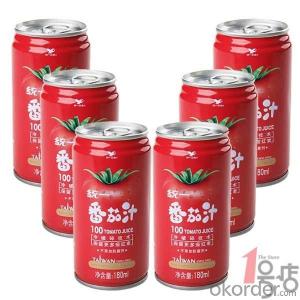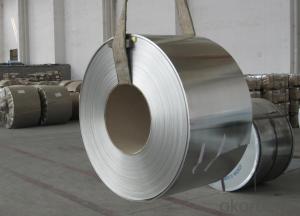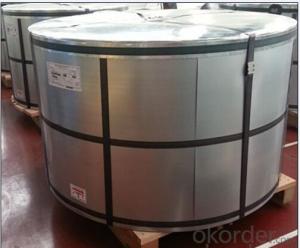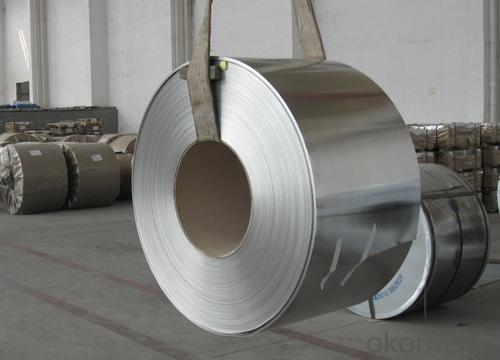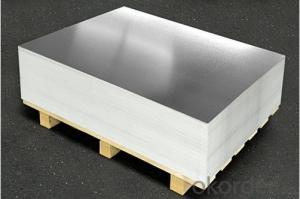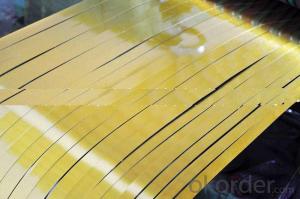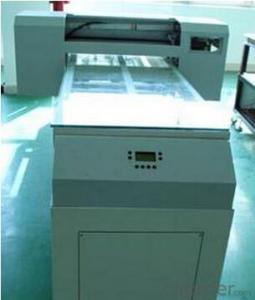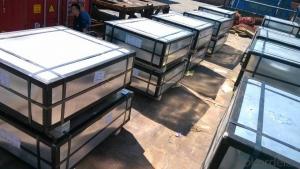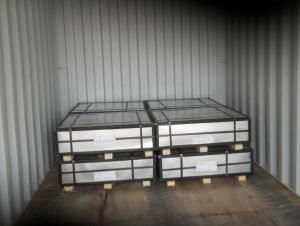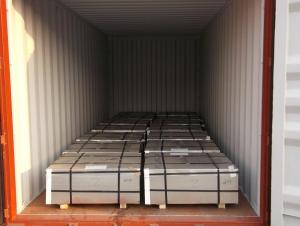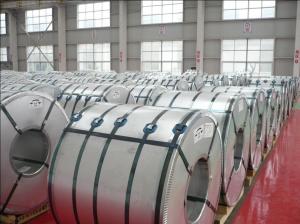Single Reduced Tinplate For Chemical Cans, SPCC/MR
- Loading Port:
- Tianjin
- Payment Terms:
- TT OR LC
- Min Order Qty:
- 15 m.t.
- Supply Capability:
- 50000 m.t./month
OKorder Service Pledge
OKorder Financial Service
You Might Also Like
1.Usage
Tinplate is widely used for making all types of containers, containing industrial usage such as paint can, oil can, aerosol cans etc., and food cans like milk powder cans, tomato paste can, dry food cans etc.
2. Quality
As a state owned company and a large tinplate supplier in China, our tinplate quality ranks 1st level in China, similar to Bao Steel, Posco etc.
3. Specification
standard: GB/T2520, JIS G3303, DIN EN10202
Material: MR /SPCC
Thickness available: 0.16-0.50MM
Width available: 600~1050MM
Temper grade: T1 – DR8
Tin coating: ordinary 2.8g/2.8g, 5.6g/5.6g and others
Package: sea worthy export package.
Applications: Tin can for chemicals & paint cans, industrial cans, food cans
4. Our factory photo:
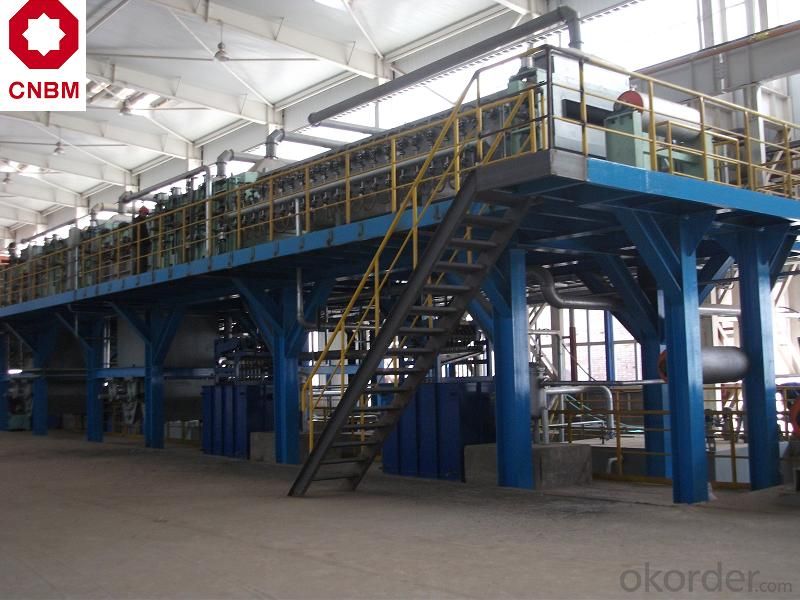
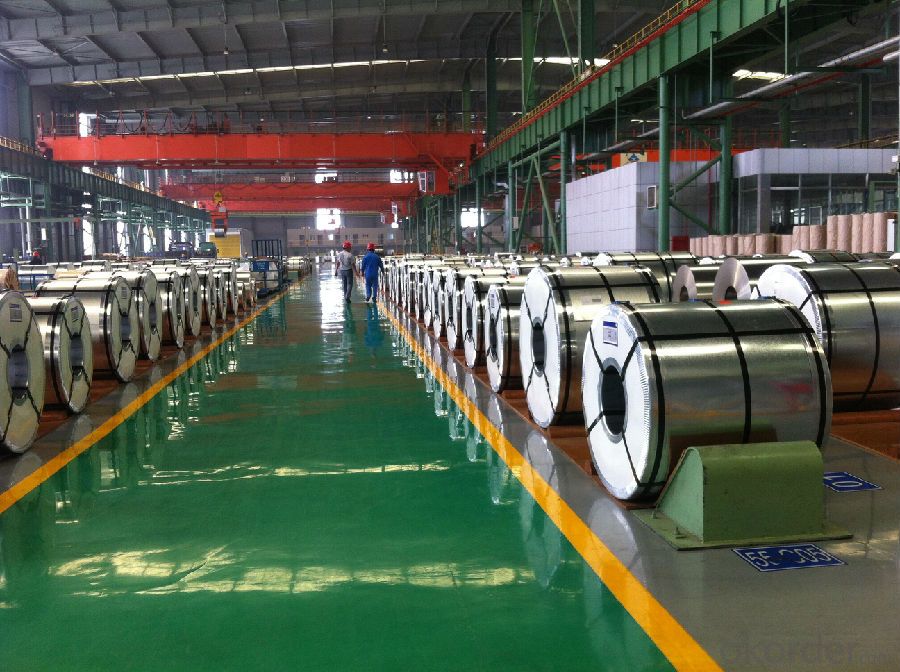
5. Our Markets:
now our tinplate has been sold to more than 30 countries, including Europe countries, Gulf Area, South American, South Afric etc.
6. Our Overseas Wareouses:
Furthermore, in the year 2014, we have more than 10 overseas warehouses all over the word, located in KSA, UAE, Oman, Russia, Kuwait, Qatar, Oman, Chile, Brazil etc.
7. FAQ
a. what's the annual output?
about 500,000 tons per year.
b. where's the raw matrial from?
our hot rolled coil is purchased from Capital Steel and other state owned mill, with quite good quality.
c. how long is the delivery time?
normally for SPCC about 45~55 days, while 65~75 days for MR material
d. how to control the quality during production process?
inside our workshop, we have MES syestem. It realizes the optimization of the production procedure in the workshop. It could record each step of the whole production procedures, and if some problem appears, factory could easily found and take action, it’s quite helpful to monitor and control the quality.
- Q: How does tinplate packaging handle exposure to moisture?
- Tinplate packaging has excellent resistance to moisture, making it highly suitable for protecting products from humidity and preventing damage caused by exposure to moisture.
- Q: What are the main applications of tinplate in the construction industry?
- Tinplate is commonly used in the construction industry for various applications, including roofing, cladding, and insulation. It provides durability and corrosion resistance, making it suitable for outdoor structures. Tinplate can also be used for decorative purposes, such as wall panels and ceiling tiles. Additionally, it is used in HVAC systems and air ducts due to its heat resistance properties.
- Q: What are the advantages of using tinplate?
- There are several advantages of using tinplate. Firstly, tinplate is highly durable and resistant to corrosion, making it ideal for packaging and storage purposes. Additionally, tinplate is lightweight and easily formable, allowing for versatility in design and easy transportation. It also provides a high level of protection to the contents, preventing spoilage or contamination. Moreover, tinplate is recyclable and environmentally friendly, contributing to sustainability efforts. Lastly, tinplate has excellent printability, allowing for attractive and eye-catching designs, enhancing product visibility and branding.
- Q: What are the applications of tinplate?
- Tinplate has various applications, primarily in the packaging industry. It is commonly used to make food and beverage cans, as it provides a protective barrier against moisture, oxygen, and light. Tinplate is also used for making aerosol cans, paint cans, and containers for cosmetics and pharmaceutical products. Additionally, it is utilized in the manufacturing of metal caps and closures for bottles and jars.
- Q: How is tinplate coated for furniture?
- Tinplate is typically coated for furniture by a process called electroplating. The tinplate is immersed in an electrolyte solution, and an electric current is applied to deposit a layer of tin onto the surface. This coating enhances the durability and corrosion resistance of the tinplate, making it suitable for furniture applications.
- Q: What are the industry standards for tinplate?
- The industry standards for tinplate typically include specifications regarding the tin coating thickness, base metal quality, surface finish, dimensional tolerances, and other relevant characteristics. These standards are established by organizations such as the International Organization for Standardization (ISO) and the American Society for Testing and Materials (ASTM), ensuring consistency and quality across the tinplate industry.
- Q: Does tinplate affect the taste or quality of food?
- Yes, tinplate can affect the taste and quality of food to a certain extent. Tinplate is a type of steel coated with a thin layer of tin, which serves as a protective barrier between the food and the metal. However, if the tin coating becomes damaged or compromised, it can lead to the transfer of metal ions into the food, resulting in a metallic taste and potentially affecting the quality. Therefore, it is crucial to ensure the integrity of the tin coating to maintain the taste and quality of the food.
- Q: What are the different methods of storing tinplate packaging?
- There are several methods of storing tinplate packaging, including stacking them on shelves or pallets, using storage bins or containers, hanging them on racks or hooks, or utilizing specialized storage systems such as gravity flow or carousel systems. The choice of method depends on factors such as available space, the quantity of packaging, ease of access, and the specific requirements of the packaging material.
- Q: What are the typical transportation requirements for tinplate?
- The typical transportation requirements for tinplate include ensuring proper packaging and protection to prevent damage during handling and shipment. Tinplate is commonly transported in rolled or flat sheets, coils, or fabricated containers, depending on the specific product and its intended use. It is crucial to handle tinplate with care to avoid scratches, dents, or corrosion that could impact its quality. Additionally, proper labeling and documentation are necessary to comply with regulatory and customs requirements during transportation.
- Q: What are the different ways to recycle tinplate packaging?
- There are several different ways to recycle tinplate packaging. One common method is to separate the tinplate from other materials, such as paper or plastic, and then send it to a recycling facility where it can be melted down and reused to make new tinplate products. Another option is to reuse the tinplate packaging for storage or other purposes before eventually recycling it. Additionally, some municipalities offer curbside recycling programs where tinplate packaging can be collected and processed along with other recyclable materials.
Send your message to us
Single Reduced Tinplate For Chemical Cans, SPCC/MR
- Loading Port:
- Tianjin
- Payment Terms:
- TT OR LC
- Min Order Qty:
- 15 m.t.
- Supply Capability:
- 50000 m.t./month
OKorder Service Pledge
OKorder Financial Service
Similar products
Hot products
Hot Searches
Related keywords
